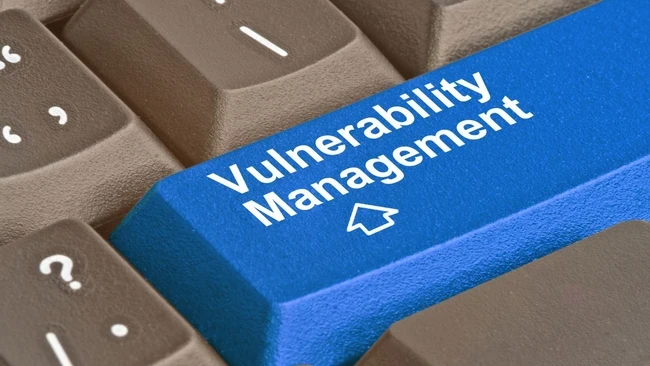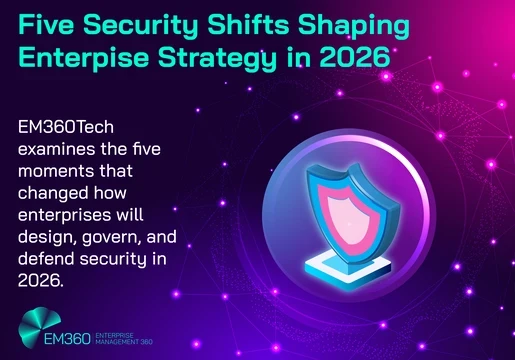2024 is shaping up to be a challenging year for vulnerability management. The increasing sophistication of threats, paired with the recent surge in cyber attacks, means that keeping IT infrastructure secure has never been more complex for security teams.
And with the average cost of a cyber attack reaching a record $9.46 million for US businesses in 2023, businesses need a cyber defence system that proactively identifies vulnerabilities in their systems and keeps them out of the hands of malicious actors.
That’s where vulnerability management tools can help.

What are vulnerability management tools?
Vulnerability management tools are software applications that help organizations identify, assess, and remediate vulnerabilities in their IT systems and networks.
They work by scanning systems for known vulnerabilities and then providing information about the severity of the vulnerability, the potential impact it could have on the organization, and steps that can be taken to remediate it.
Identifying and addressing these vulnerabilities before they are exploited by attackers is vital. By securing them before it's too late, vulnerability management tools shrink the number of entry points attackers can use to compromise your systems, making it significantly harder for them to launch successful attacks.
Why are vulnerability management tools important?
Vulnerability management tools continuously scan your systems, uncovering vulnerabilities like outdated software, misconfigurations, or buggy applications that malicious actors could use to gain access to your data.
Not all of these vulnerabilities are created equal, so these tools are crucial to helping you focus on the most critical ones based on their severity, exploitability, and potential impact on your systems and data, ensuring you're patching the most urgent issues first and maximizing your security efforts.
Read: Top 10 Biggest Cyber Attacks in History
Many industries and regulations also mandate vulnerability management as a key security control that all organizations must implement. Proactive vulnerability management can prevent costly data breaches, downtime, and reputational damage, leading to significant long-term financial savings and an overall better security posture across your organization.
Vulnerability management is also crucial to helping organizations demonstrate compliance, as they often provide detailed reports on identified vulnerabilities, remediation actions taken, and overall security posture.
Features of vulnerability management tools

Vulnerability management tools offer a range of features to help organizations identify security vulnerabilities before they’re exploited and maintain a secure IT environment across the organization.
Here's a deeper dive into some of their key features:
1. Asset Discovery and Inventory
- Vulnerability management tools comprehensively scan your network to discover all connected devices, applications, and operating systems, creating a detailed inventory.
- They categorize assets based on criticality, function, and security level, aiding in prioritizing risk management.
-
Tools monitor asset changes, alerting you to new devices or software installations that might introduce vulnerabilities.
2. Vulnerability Scanning and Assessment
- These tools leverage vast databases of known vulnerabilities, including Common Vulnerabilities and Exposures (CVEs), to scan your assets.
- Scans go beyond basic checks too. Many vulnerability management tools probe for misconfigurations, weak passwords, and other security weaknesses.
- Tools also assign severity scores to vulnerabilities based on exploitability, impact, and potential damage, while advanced tools use techniques like machine learning to minimize false positives so you can focus your attention on real threats.
3. Prioritization and Remediation
- Many vulnerability management tools prioritize vulnerabilities based on severity, exploitability, and potential impact, guiding your remediation efforts.
- They also often integrate with patch management systems to automate patching processes and ensure timely vulnerability closure, and offer detailed information on remediation steps, including available patches, workarounds, and mitigation strategies.
- Many tools automatically generate comprehensive reports on vulnerabilities, remediation progress, and overall security posture.
4. Additional Features
- Some vulnerability management tools integrate threat intelligence feeds to alert you of emerging vulnerabilities and targeted attacks before they happen.
- They're also great for compliance management, as many comply with security regulations by providing reports and documentation on vulnerability management processes
- Many tools integrate with firewalls, intrusion detection systems, and other security solutions to provide a holistic view of your security posture.
Choosing a Vulnerability management solution
Choosing the best vulnerability management tool for your business is crucial for strengthening your organization's security posture and keeping your data out of the hands of threat actors.
Here are some key considerations before making your decision:
1. Your IT environment
- Consider the number and types of devices, applications, and operating systems you manage. Complex environments require tools with comprehensive scanning capabilities and robust asset management.
- If you use cloud-based infrastructure, choose a tool with cloud-specific features and integrations.
2. Security needs and priorities:
- Ensure the vulnerability management tool tool aligns with relevant industry regulations or internal compliance policies.
- If you face targeted attacks or industry-specific threats, you'll need to choose a tool with features tailored to those risks.
- Consider how the tool integrates with your existing security ecosystem (firewalls, SIEM, etc.) for streamlined workflows.
3. Budget and resources:
- Evaluate the tool's pricing model (subscription, perpetual) and consider any additional costs for deployment, training, or maintenance.
- You'll also need to asess your team's technical skills and available resources to manage and utilize the tool effectively.
4. Features and functionalities
- Before choosing a vulnerability tool, it's important to evaluate the tool's scanning capabilities, including internal, external, and web application scanning. Look for tools that offer accurate severity scoring and risk-based prioritization algorithms rather than just scanning too.
- When it comes to remediation, choose a tool with clear remediation steps, patch management integration, and automation options where feasible.
- Consider features like threat intelligence feeds, compliance management tools, and customization options based on your needs.
Best Vulnerability Management tools and software
We’ve compiled ten of the best vulnerability management tools for 2024 to help you choose the right software solution to keep your business secure.







Comments ( 0 )